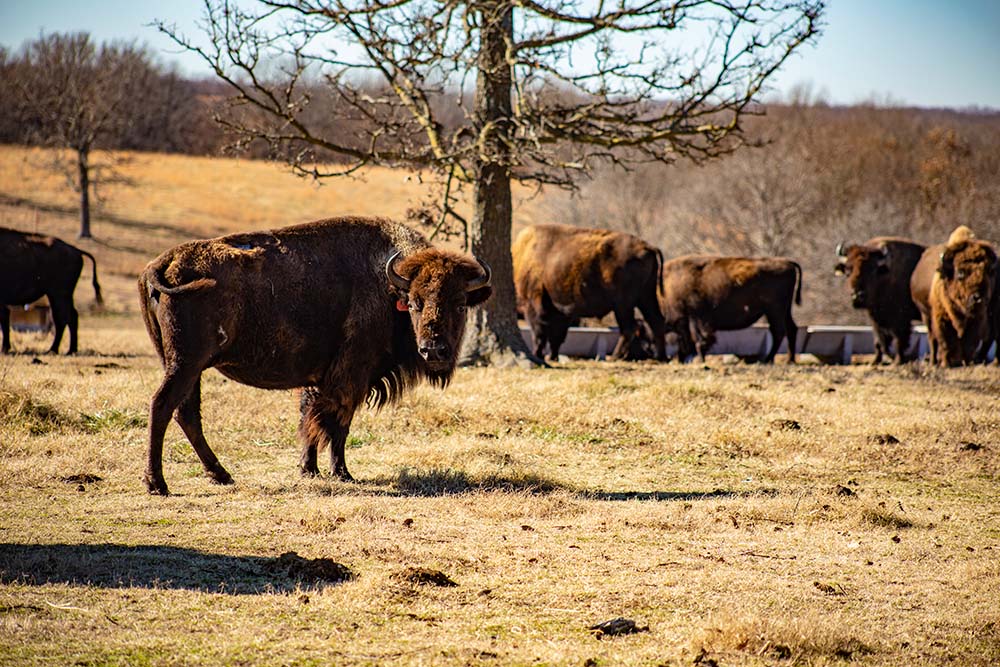
- Details
- By Chez Oxendine
- Food | Agriculture
The Iowa Tribe of Kansas and Nebraska is developing a new regenerative agriculture educational institution aimed at helping Native producers retain more of the economic benefits from their sustainable operations.
The tribe’s Center for Excellence for Regenerative Native Agriculture (CERNA) will offer two cohorts a year for Native and non-Native students, who will participate in intensive two-week courses. The program will share training on regenerative agriculture techniques, such as adaptive grazing and supply chain management.
CERNA participants also will receive financial support, such as direct payments and market research, for growing what Iowa Tribe chairman Timothy Rhodd called “commodity products.”
The tribe kicked off CERNA after receiving support from the U.S. Department of Agriculture Partnerships for Climate Smart Commodities Program, which forges relationships between the department and partner organizations in support of environmentally sound, sustainably sourced products.
The Iowa Tribe received $5 million over a five-year period to maintain the program.
CERNA aims to support farmers supplying local markets directly rather than through a middleman or secondary supplier. Currently, farmers on Iowa Tribe reservation land keep roughly 15.6 cents of each dollar they produce, said Artees Vannett, director of operations for Grey Snow Management Solutions, an Iowa Tribe subsidiary. Through CERNA and its accompanying financial support programs, the tribe intends to “tilt that the other way.”
“Our goal is to shift that balance and increase those dollars dramatically,” Vannett told Tribal Business News. “We’re trying to remove every barrier between new farmers and these regenerative agricultural practices and growing these commodity foods. We’re closing these gaps in our supply chains so we can take those margins that middlemen are taking and distribute those to our farmers and our consumers on the other end of it.”
Want more Tribal Business News? Get the free weekly newsletter today.
Rhodd pointed to adaptive grazing as an example of the techniques outlined for CERNA lesson plans when the institute opens its first cohort in fall 2023. Adaptive grazing uses environmental data, frequent cattle rotation, and improved water infrastructure to avoid “overgrazing” an area to the point it can’t recover quickly.
Rhodd said teaching farmers how to graze more efficiently will improve both their herds and their pastures, reducing the overall environmental impact of grazing.
“We are trying to mimic Mother Nature as much as we can. Our old model, we were overstocked (on cattle), and we overgrazed all of our pastures in our reservations, which set us back many, many years because we weren’t able to bring in all the water that we needed,” Rhodd said. “If you can think about buffalo and bison, they didn’t stay in one square or circle, they roamed. Whatever their diet needed, that’s where they went. That’s the adaptive grazing program: going back and giving our animals fresh ungrazed areas on a daily basis.”
Cultural shift
The tribe expects to bring in 10 cohorts over the course of its grant period. Grant funding will enable CERNA to address 100,000 acres of land through its relationships with cohort participants, dwarfing the 6,000 acres of reservation land owned directly by the Iowa Tribe, Vannett said.
“We’re talking about a cultural shift in education,” Vannett said. “That will have a large impact economically when you begin to look at what these producers will be making. If they take what we teach and produce a non-GMO soybean, they’re going to make double what they would have seen otherwise.
“We’re going to dramatically change these producers’ journeys, so they can trace their product from the farm to the end consumer and see those returns.”
Focusing on organic food that will go directly to consumers rather than “industrial crops” meant to supply larger businesses can fix what Vannett called a broken model for local farmers.
“The system doesn’t work because it’s heavily propped up by insurance payments and payouts (for crops),” Vannett said. “What we need to do is drive agriculture like a business. We need to see these producers like a market farmer or gardener, who grows things that people are going to end up consuming.”
Above all else, teaching local producers how to put the environment first in their farming techniques will slow the potential collapse of farming conditions on the Iowa Tribe reservation, Rhodd said. The chairman predicted the tribe had “maybe 60” harvests under current practices before obliterating the reservation’s topsoil.
By combining traditional methods with new science, and then propagating that education to others, Rhodd said he hopes to keep his tribe’s home healthy and safe.
“We’re seeing a lot of diseases and climate disasters, and it’s catching up with us. I always tell my team there’s nothing wrong with us looking different or being different, and in order for us to progress ahead, we need to revert backward to some of our ways and marry that to Western science to make better decisions for 100 years from now,” Rhodd said. “Our modern system with our traditional modes and our traditional lands, that’s the key, right?
“We don’t have any other place to live. We’re going to be living here for the next thousands of years. We have to make it work. We have to find a way.”
